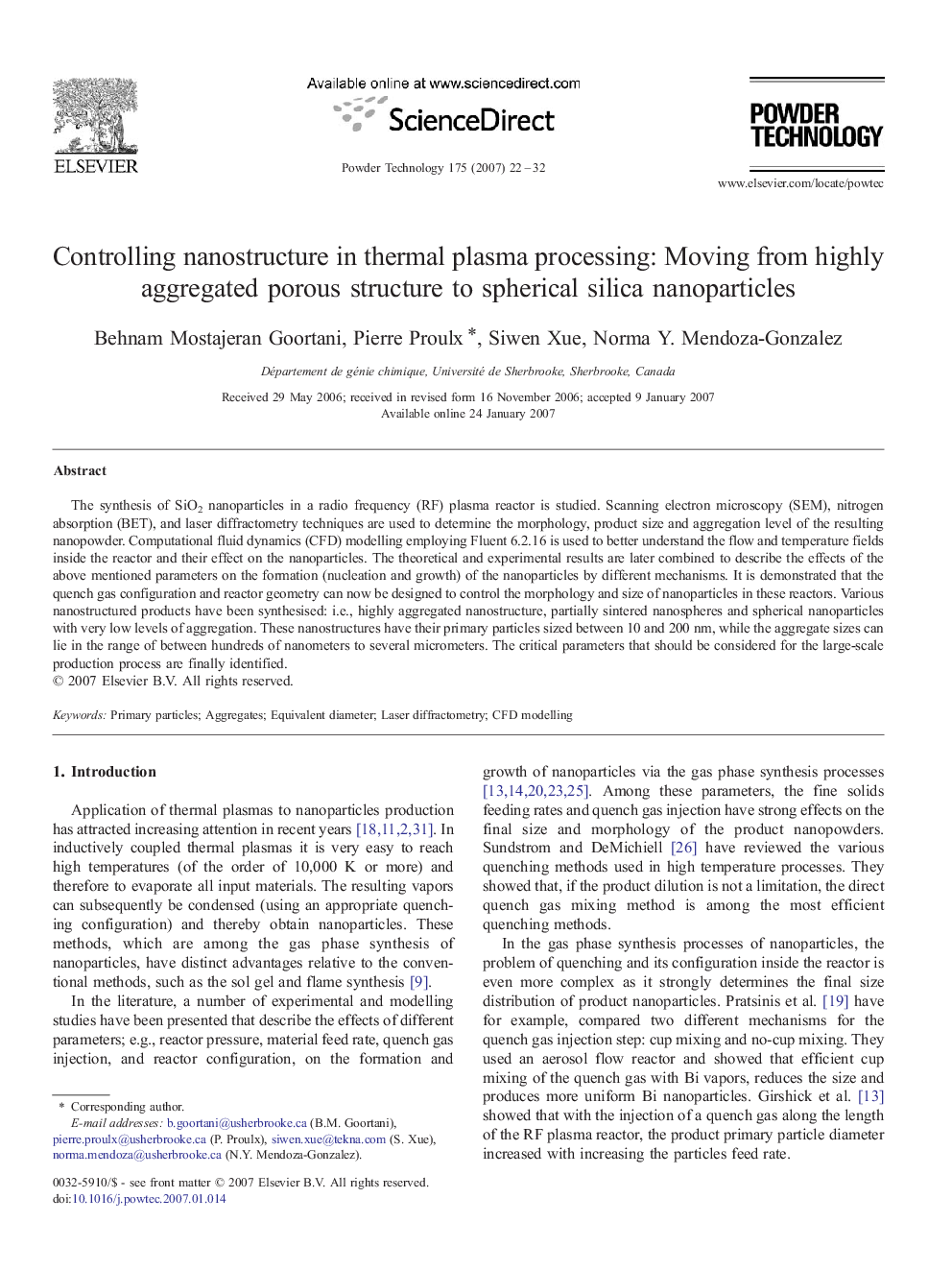| کد مقاله | کد نشریه | سال انتشار | مقاله انگلیسی | نسخه تمام متن |
|---|---|---|---|---|
| 239137 | 465799 | 2007 | 11 صفحه PDF | دانلود رایگان |

The synthesis of SiO2 nanoparticles in a radio frequency (RF) plasma reactor is studied. Scanning electron microscopy (SEM), nitrogen absorption (BET), and laser diffractometry techniques are used to determine the morphology, product size and aggregation level of the resulting nanopowder. Computational fluid dynamics (CFD) modelling employing Fluent 6.2.16 is used to better understand the flow and temperature fields inside the reactor and their effect on the nanoparticles. The theoretical and experimental results are later combined to describe the effects of the above mentioned parameters on the formation (nucleation and growth) of the nanoparticles by different mechanisms. It is demonstrated that the quench gas configuration and reactor geometry can now be designed to control the morphology and size of nanoparticles in these reactors. Various nanostructured products have been synthesised: i.e., highly aggregated nanostructure, partially sintered nanospheres and spherical nanoparticles with very low levels of aggregation. These nanostructures have their primary particles sized between 10 and 200 nm, while the aggregate sizes can lie in the range of between hundreds of nanometers to several micrometers. The critical parameters that should be considered for the large-scale production process are finally identified.
Radio frequency thermal plasma is utilized to synthesize various nanostructures of SiO2 by evaporation–condensation. These nanostructures are: highly aggregated, partially sintered, and non-aggregated spherical nanoparticles. By combining CFD simulations (using FluentTR and FPMTR) and experimental results, it is demonstrated that the quench gas configuration and reactor geometry can now be designed to control the morphology and size of nanoparticles.Figure optionsDownload as PowerPoint slide
Journal: Powder Technology - Volume 175, Issue 1, 1 June 2007, Pages 22–32